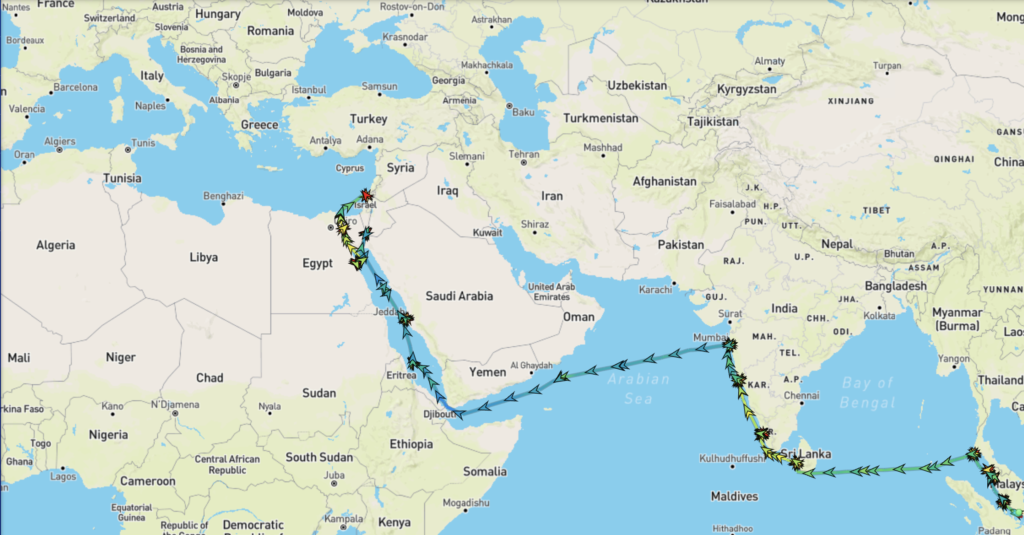
Noon Report:
- Location: N 32° 49.26′, E 035° 00.10′
- Speed: Docked
- Course: Docked
- Weather: High Clouds
- Temperature: 18º C; 64º F
- Wind: NNW 9 knots; 10 mph
We woke up docked in Haifa, Israel, this morning.
The most striking thing was to open our curtains and see Mt. Carmel right in front of us. The city of Haifa climbs its slope and looks down on the harbor (and us).
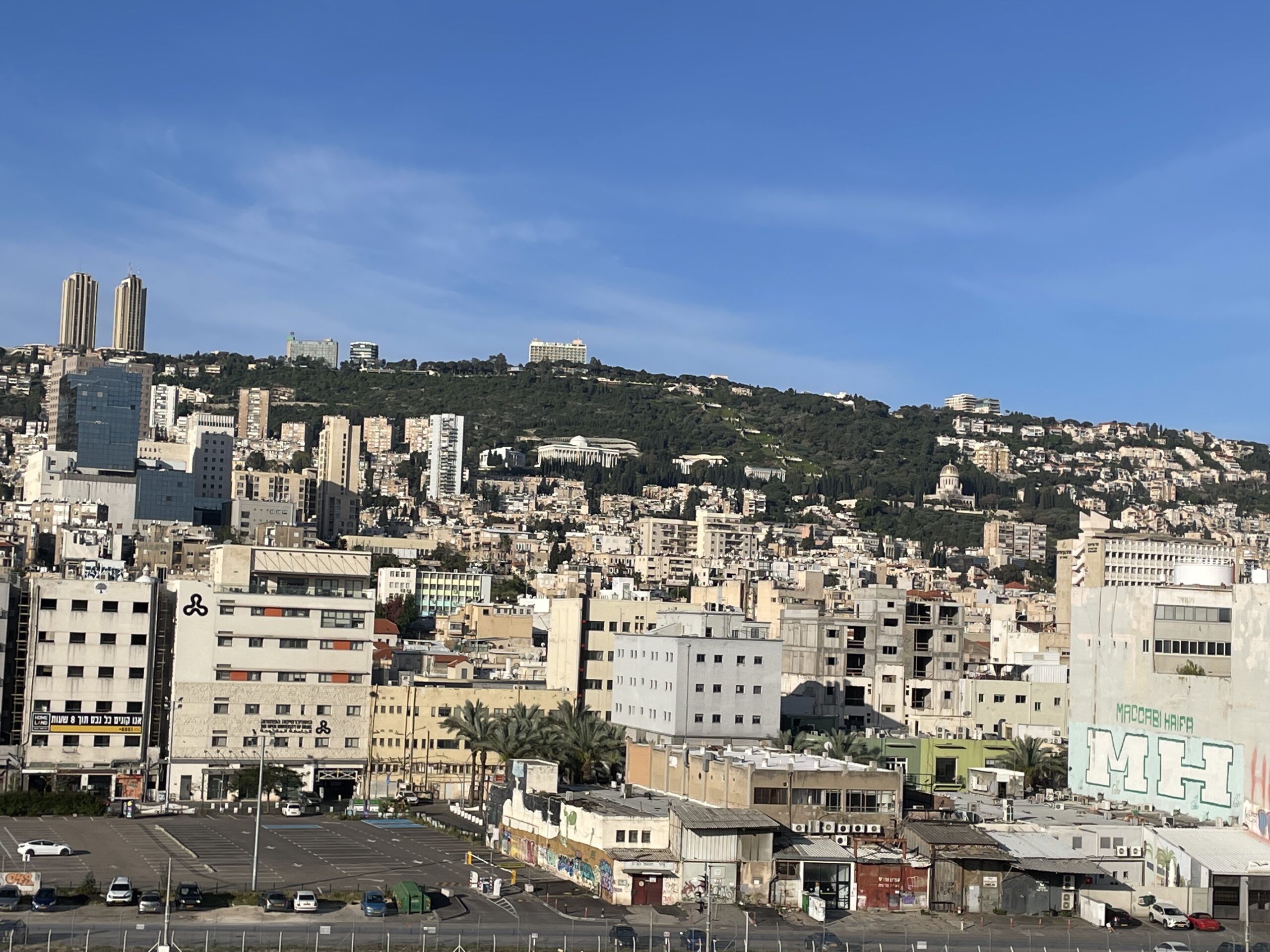
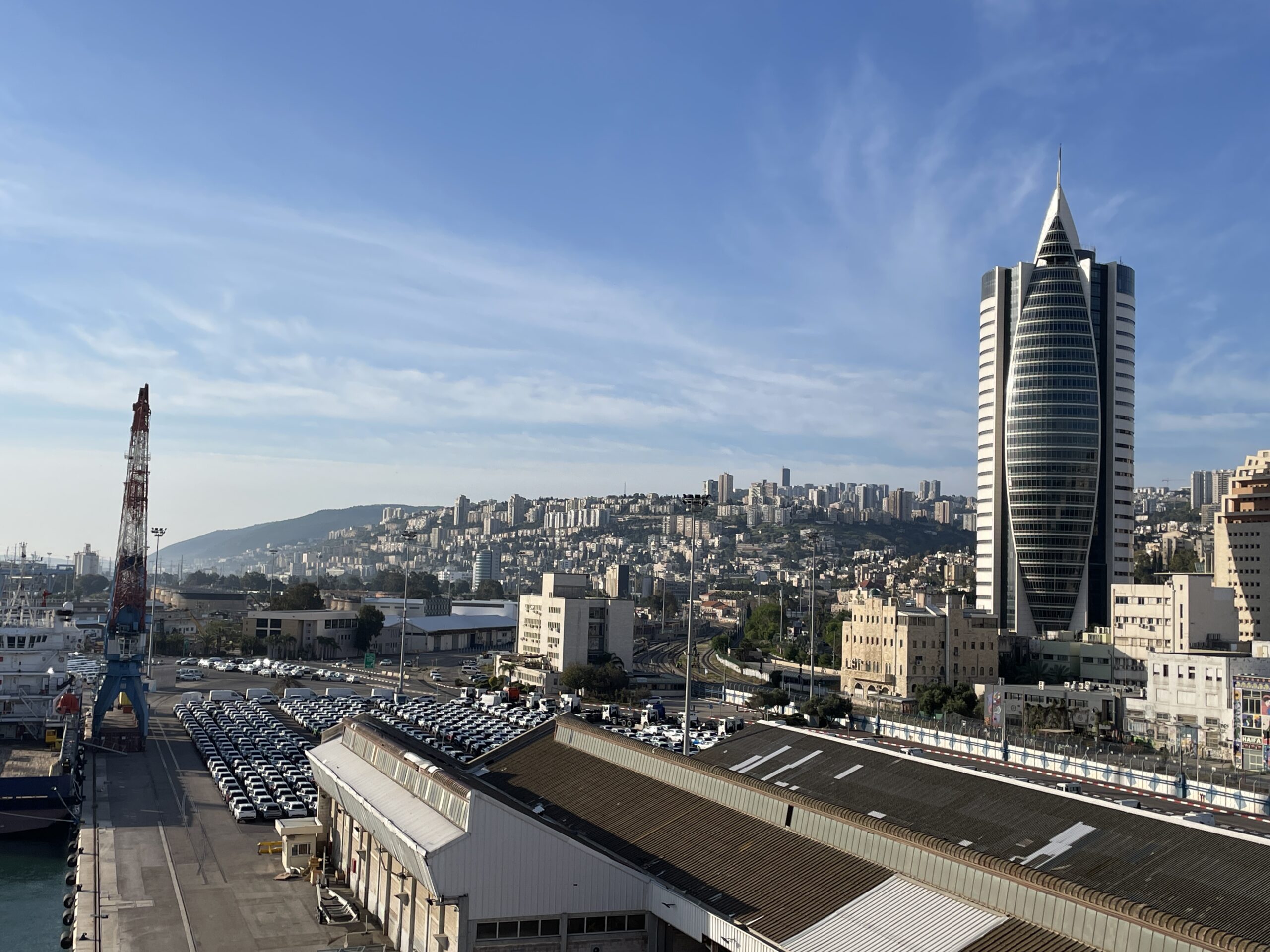
We had an early excursion call so it was a quick breakfast and then back to the room to slather on sun screen and such before making our way to the Theatre for group assignment.
On the bus we stopped at the port entrance to clear security and we were on our way.
Control here is pretty cool. At Passport Control they give you a slip of paper with a bar code (and a fuzzy copy of your passport photo). You use the bar code to pass thru a turnstyle. The barcode will activate the turnstyle for as long as your visa is active. Our guide (Golda) told us that they don’t stamp passports because there are places in the world where having visited Israel will get you in trouble, so they don’t want to provide permanent documentation of your visit.
Once we left the port we headed south for about 45 minutes to Caesarea Maritima – the city that Herod the Great built for his “country getaway” and named in honor of Caesar Augustus. Just before arriving we stopped to view an aquaduct that Herod had built to bring water to Caesarea from springs on Mt. Carmel. The original aquaduct was built between 22 and 10 BC. in 130 AD Emperor Hadrian had it upgraded and extended to double its water supply.
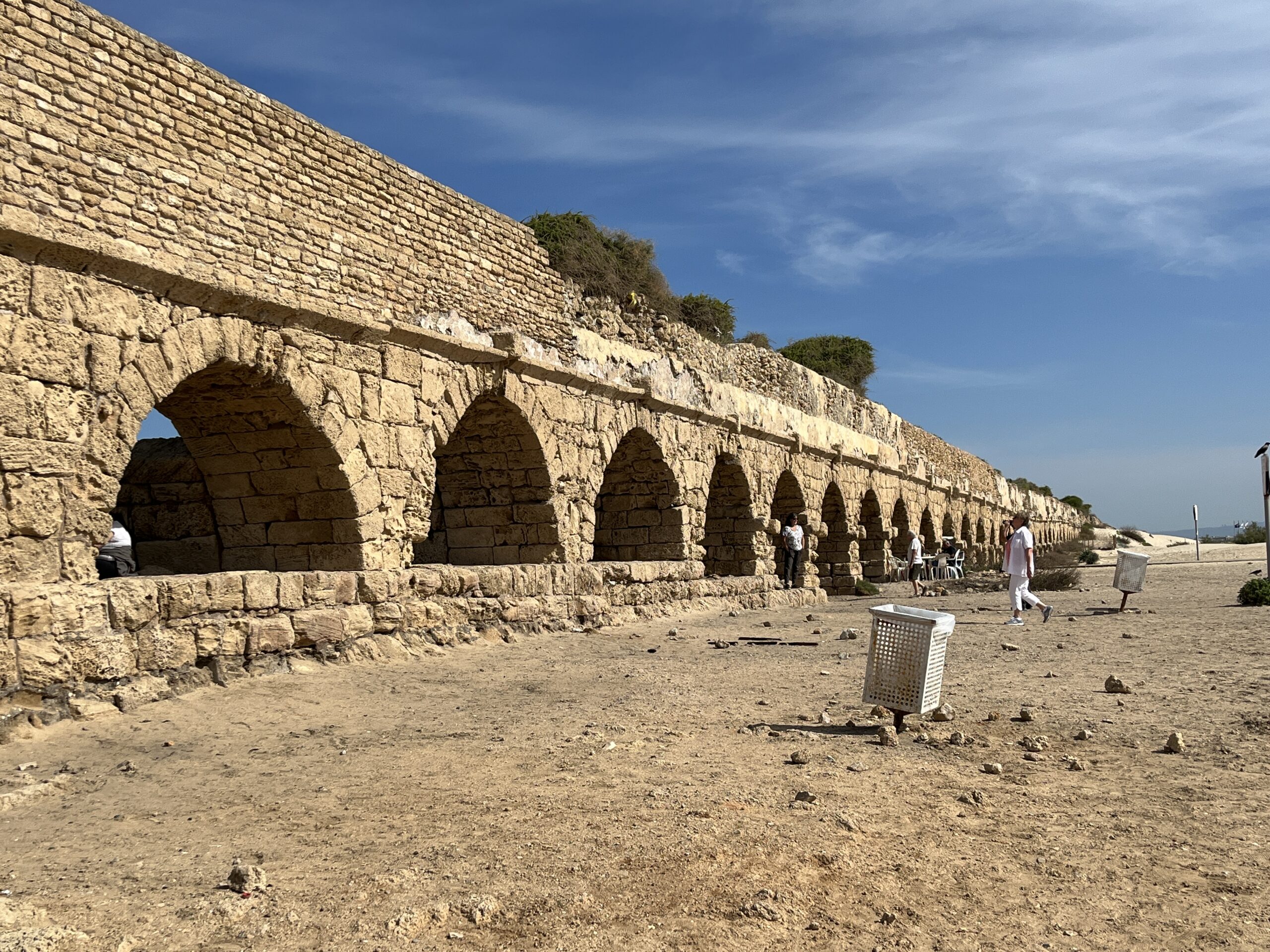
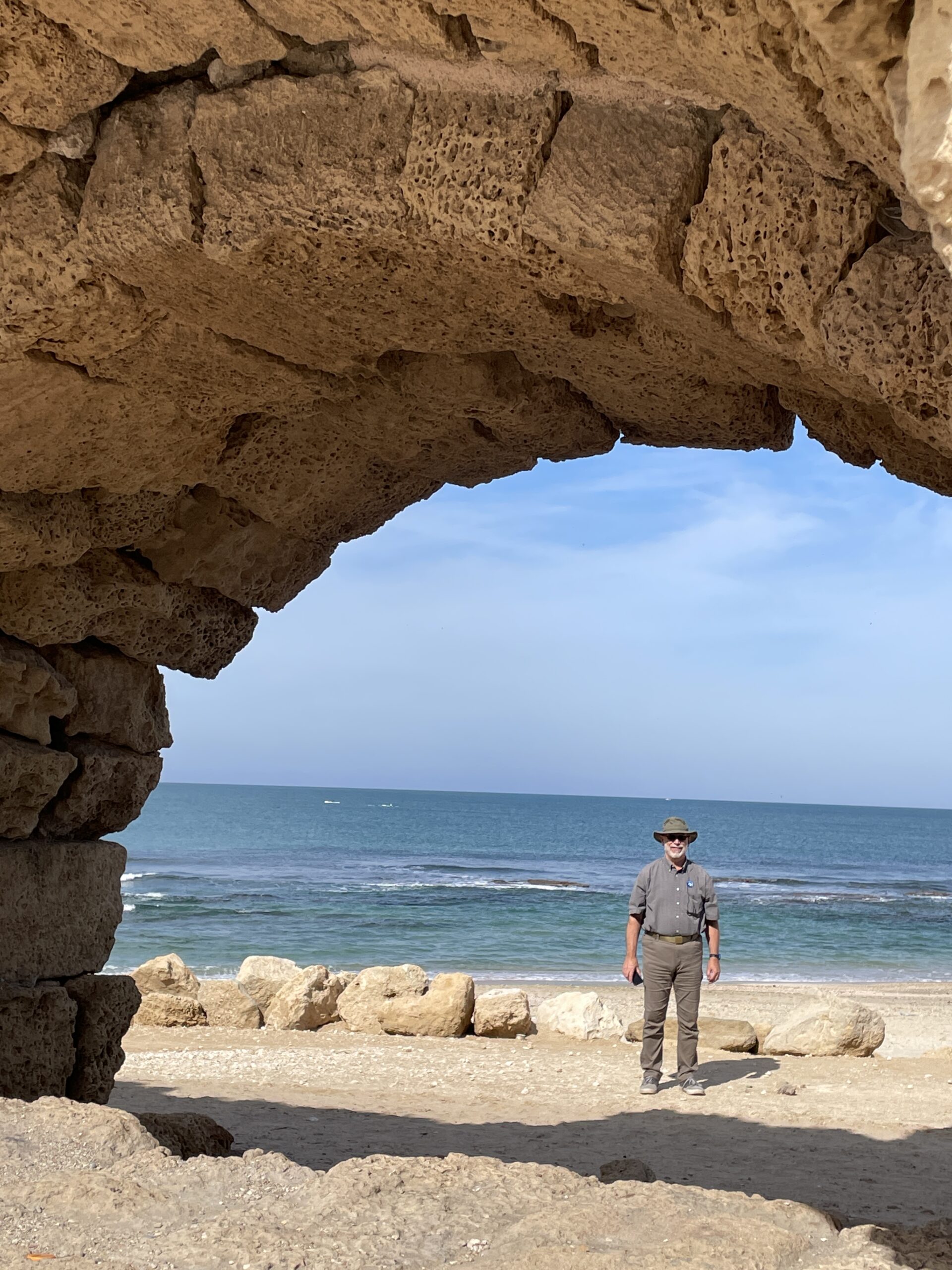
From there it was a short drive to the Caesarea Maritima National Park.
We started (after a stop to adjust fluid levels) at the amphitheater. Built in about 22 BC, the amphitheater has been reconstructed and renovated over the centuries and still serves as a concert venue today (seating numbers have been added and metal handrails). Sadly therefore, the only remaining original sections are one part of the first row and rooms and passages outside the theatre itself.
Next we moved to an overlook of the Praetorium and the remains of the palace. The palace was constructed by Herod the Great about the same time as the amphitheater.
At that time he had taken over an ancient fishing village to create a sea-side retreat with hot baths and a hippodrome. He never formally moved his capital from Jerusalem, but he tended to spend more time here than there – returning to the capital only for festivals and formal occasions.
Next to the amphitheater are the remains of the palace and administrative center.
Moving along the coast we came to the Crusader Fortress.
This fortress was built by the Muslims sometime in the 10th century (they had won control of the city in 640 AD – either by conquest or by assimilation, depending on your source). In 1101 AD during the First Crusade, Baldwin I captured and rebuilt the fortress.
The structure is currently a gathering place for tourists and locals. Today is the Sabbath, but when we arrived there was a festival going on with games for the kids and music on the stage for the Secular Jewish families.
We took some time to wander, visit the gift shop, maybe grab a bit of ice cream.
The tour bus then departed to climb to the top of Mt. Carmel to give us a city overlook.
Returning to the ship it was off to the barber to “have my ears lowered” (haircut for Randy) and back to the room to work on Blog Posts (both of us).
After a short break for dinner we were back at it, stopping to watch a “Destination Performance” by a Jewish dance group. They performed traditional dances from several of the countries inhabited by Jews during the Diaspora (one dance even included belly dancers). It was really interesting and a great performance.
Then it was “Early to bed” ’cause tomorrow is a long day.
Nite all,
R
Biblical references to Caesarea Maritima:
- Home of Philip (Acts 8, 21)
- Paul is sent to Tarsus (Acts 9)
- Baptism of Cornelius (by Peter) (Acts 10)
- John Mark’s Home (Acts 12)
- Paul imprisoned here for 2 years while awaiting audience with Felix the Governor (Acts 23)
Cheryl’s Factoids:
- Haifa has the only natural port on the Mediterranean, but Herod the Great built a huge stone-walled harbor where traders could anchor throughout the winter months then be the first to arrive at the Silk/Spice Road ports in the spring – and he charged for this. This sand base under the stone walls was eventually scoured away by the dominant currants and fell in to the sea.
- Each year at Passover, the governor travelled to Jerusalem. It was there that Pilate met Jesus and sentenced him. In Caesarea in May of 2018, archeologists found a piece of stone inscribed with Pilate’s name, which indicates Pilate lived here the rest of the time.
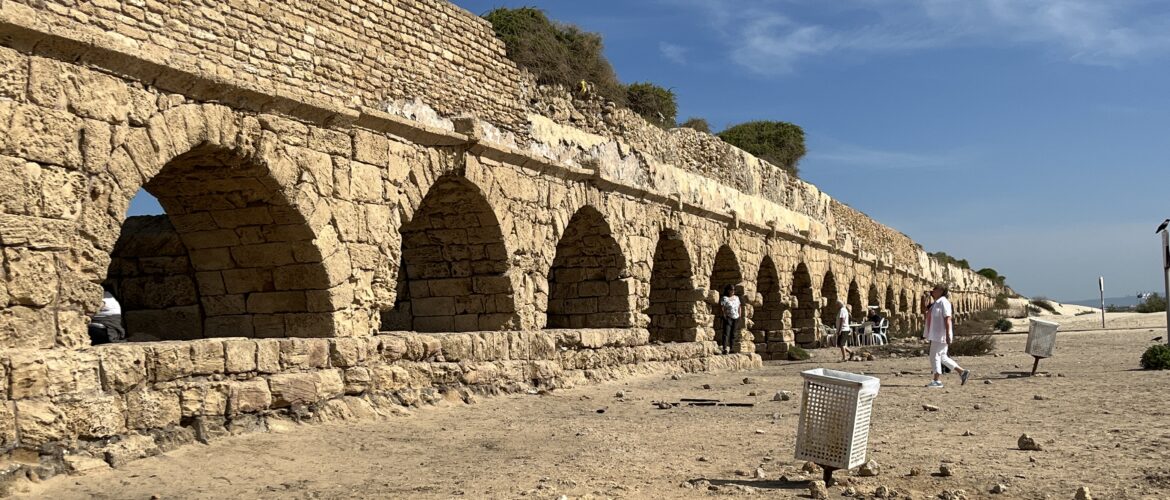
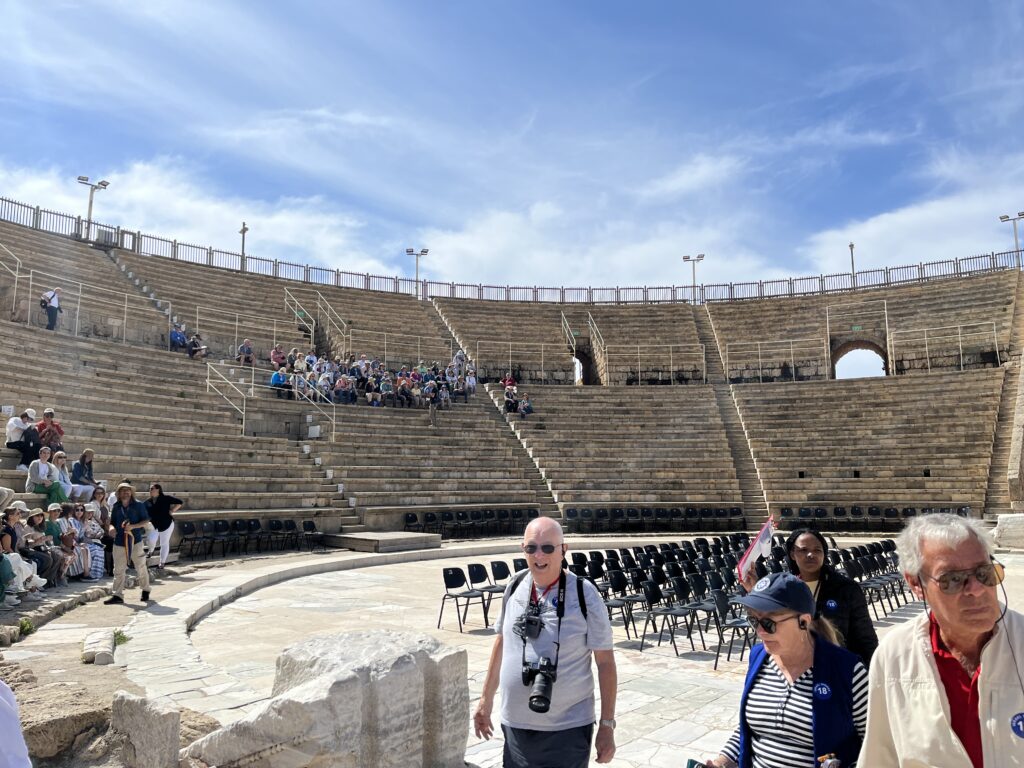
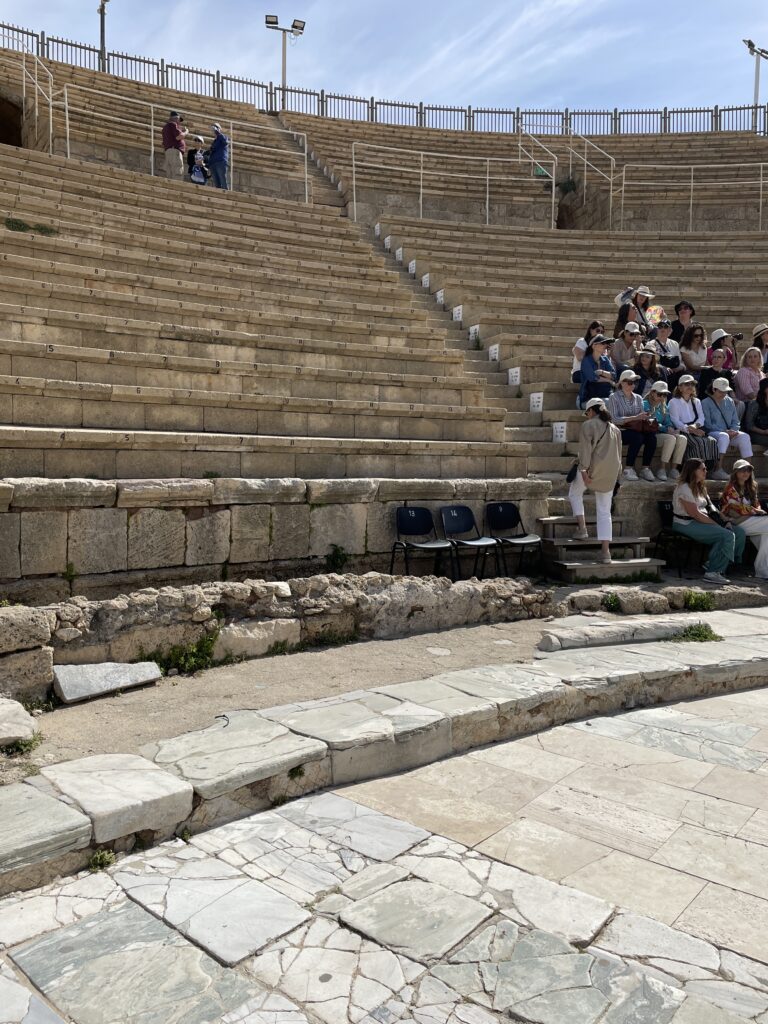
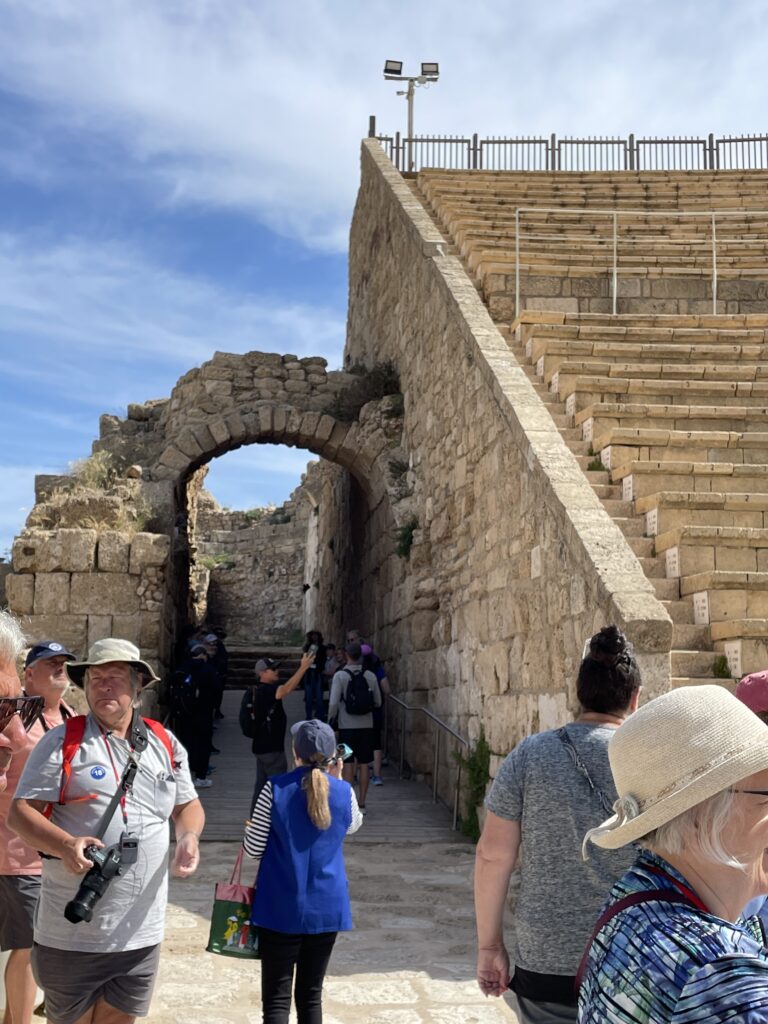
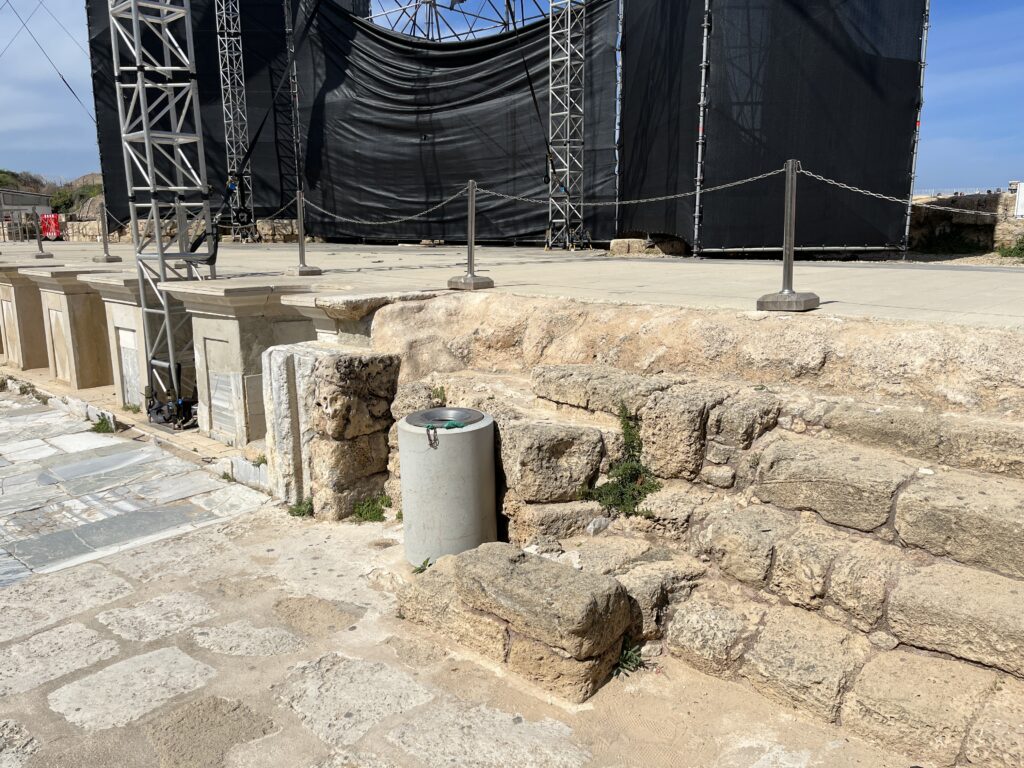
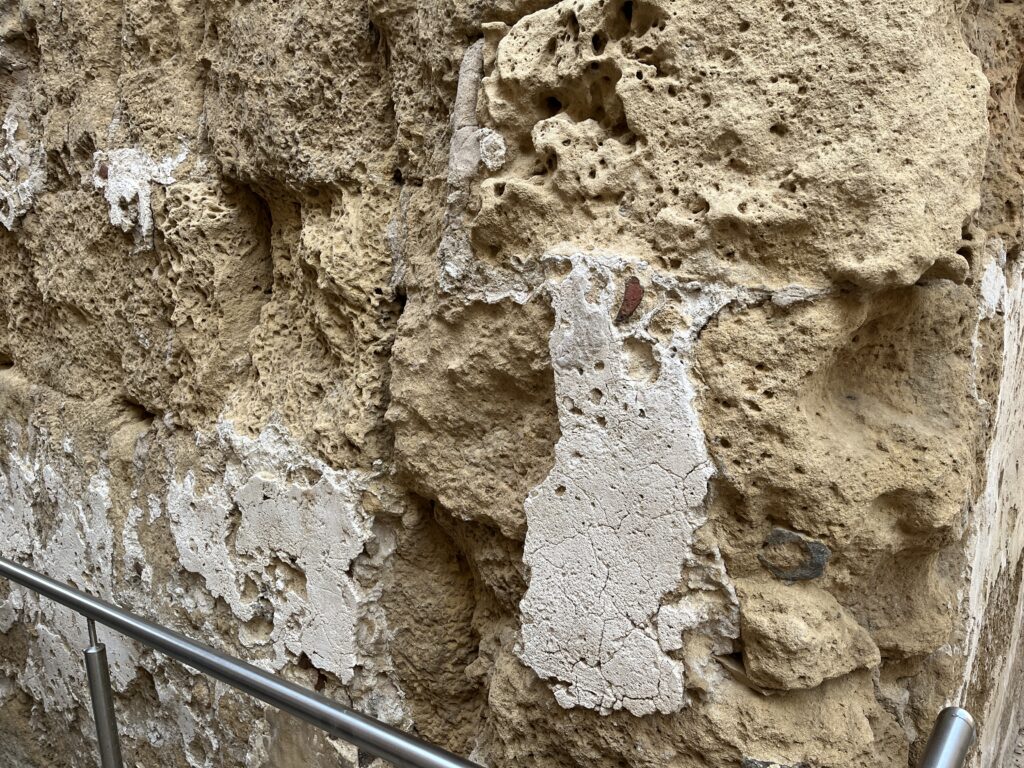
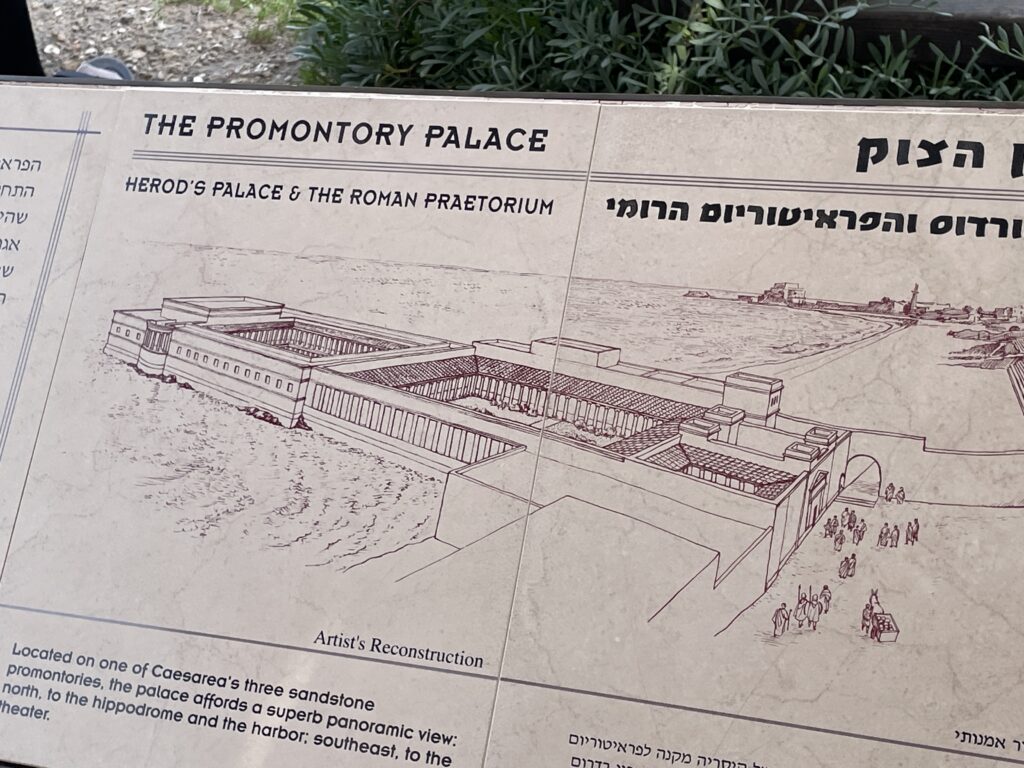
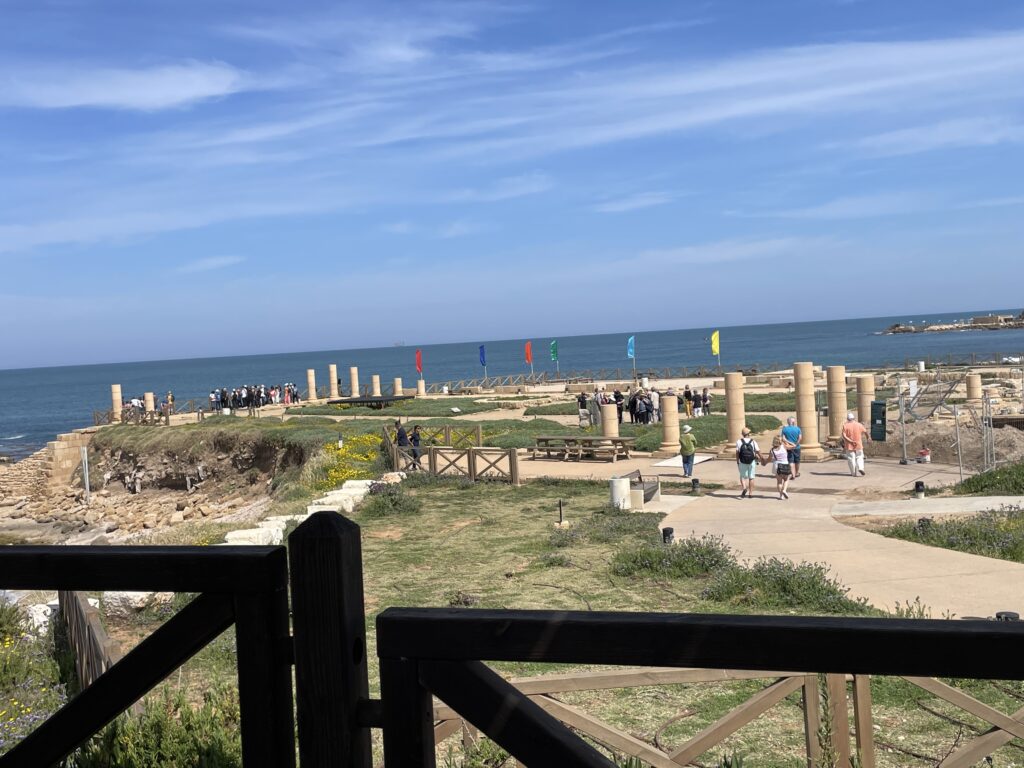
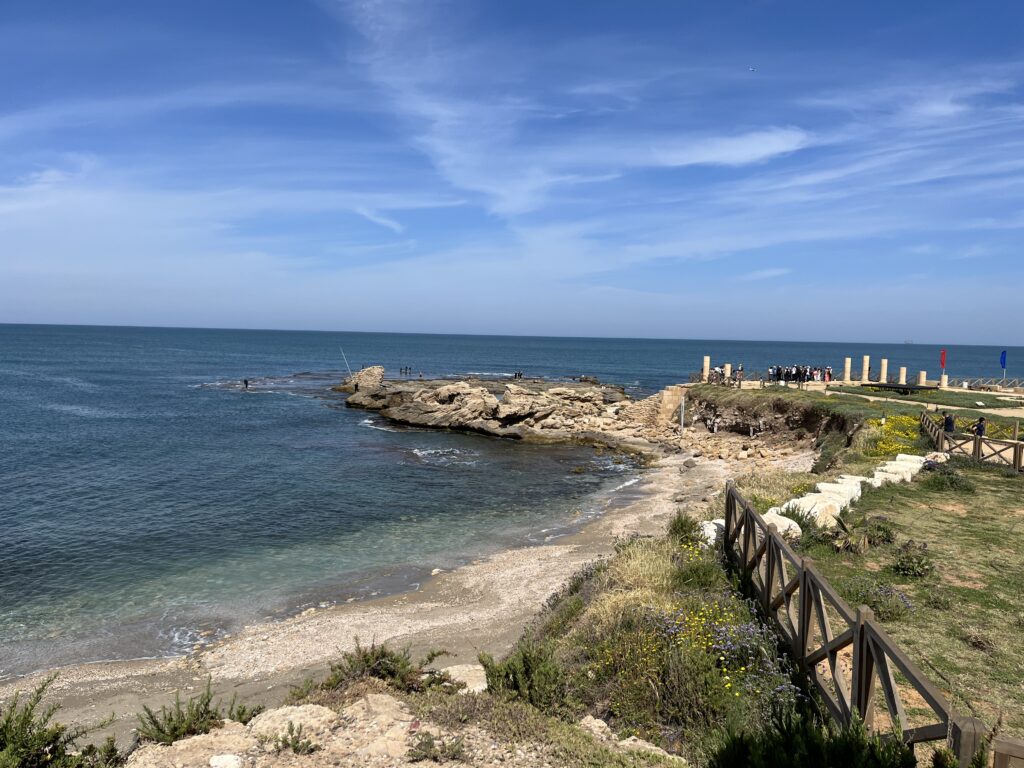
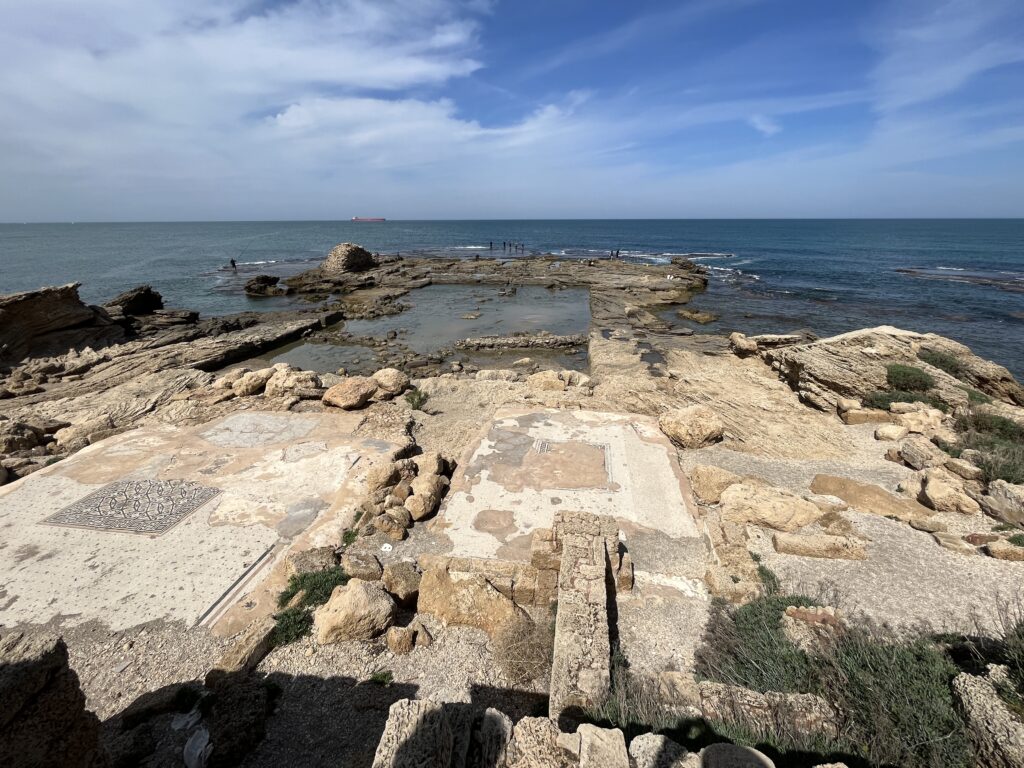
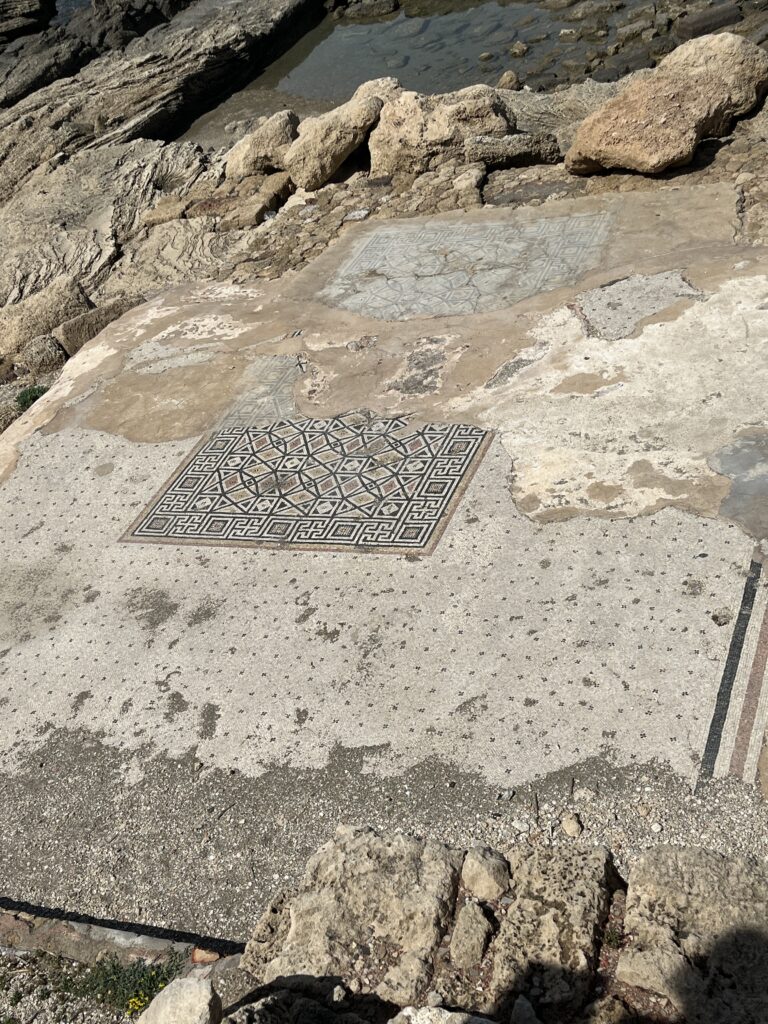
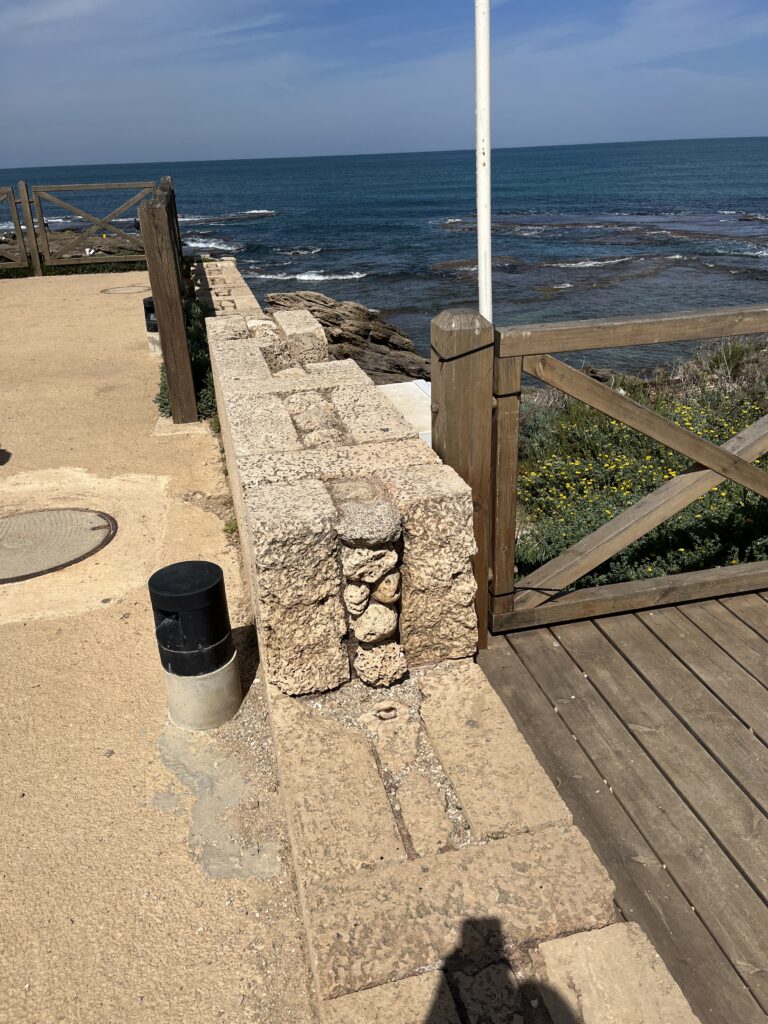
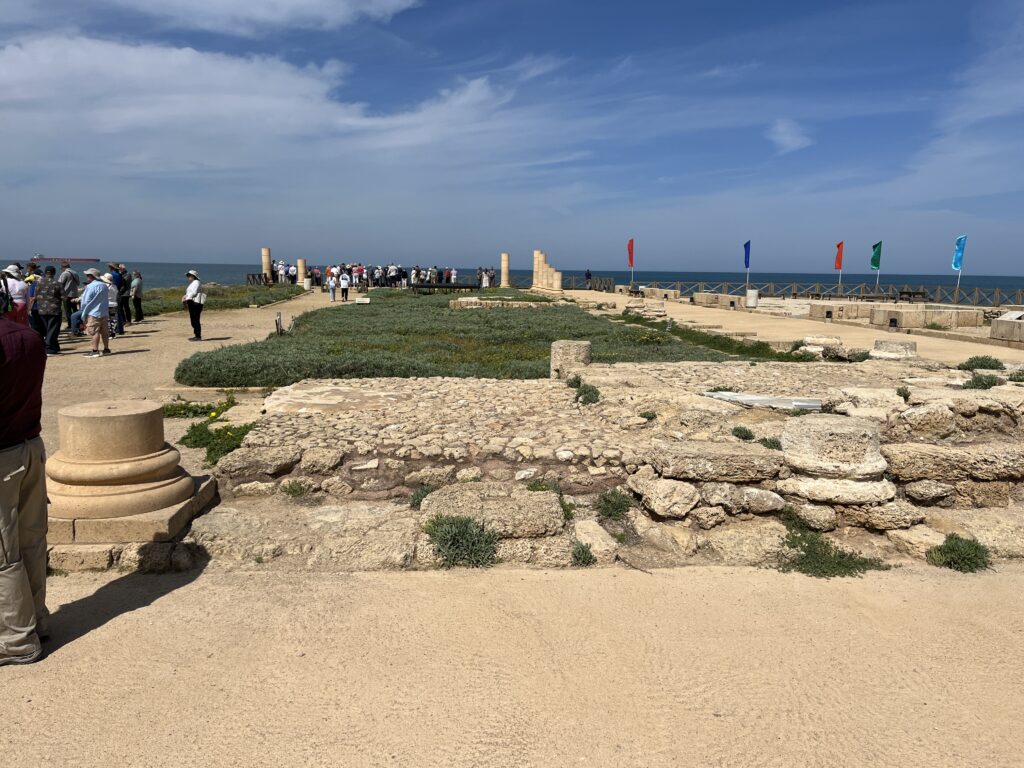
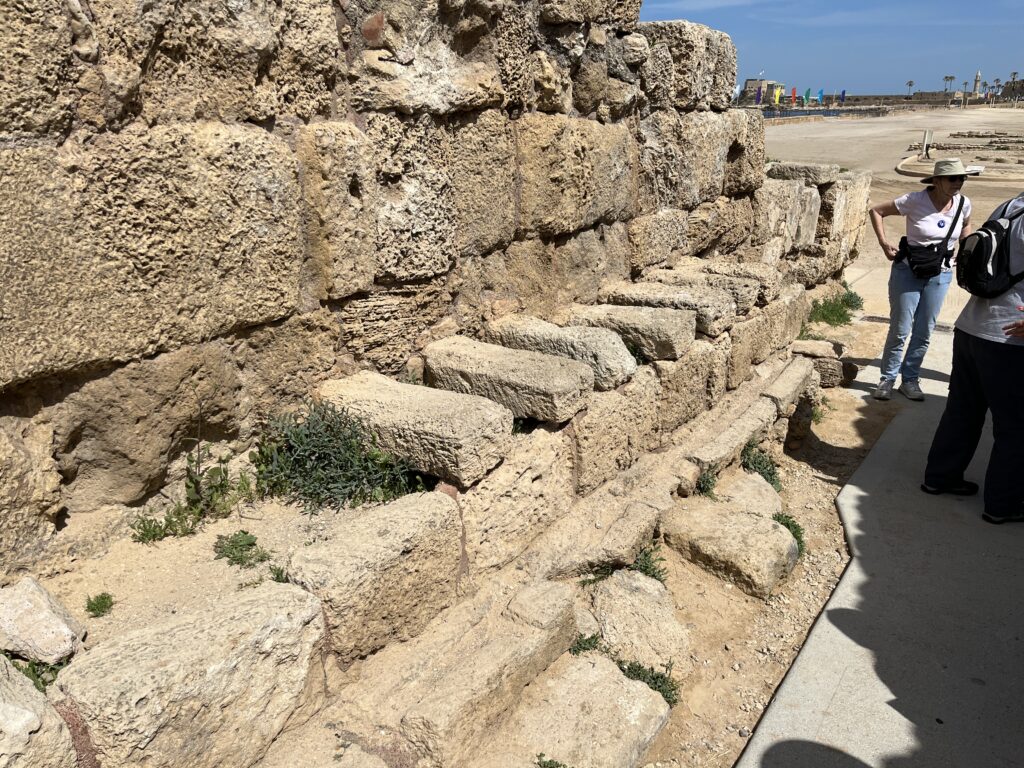
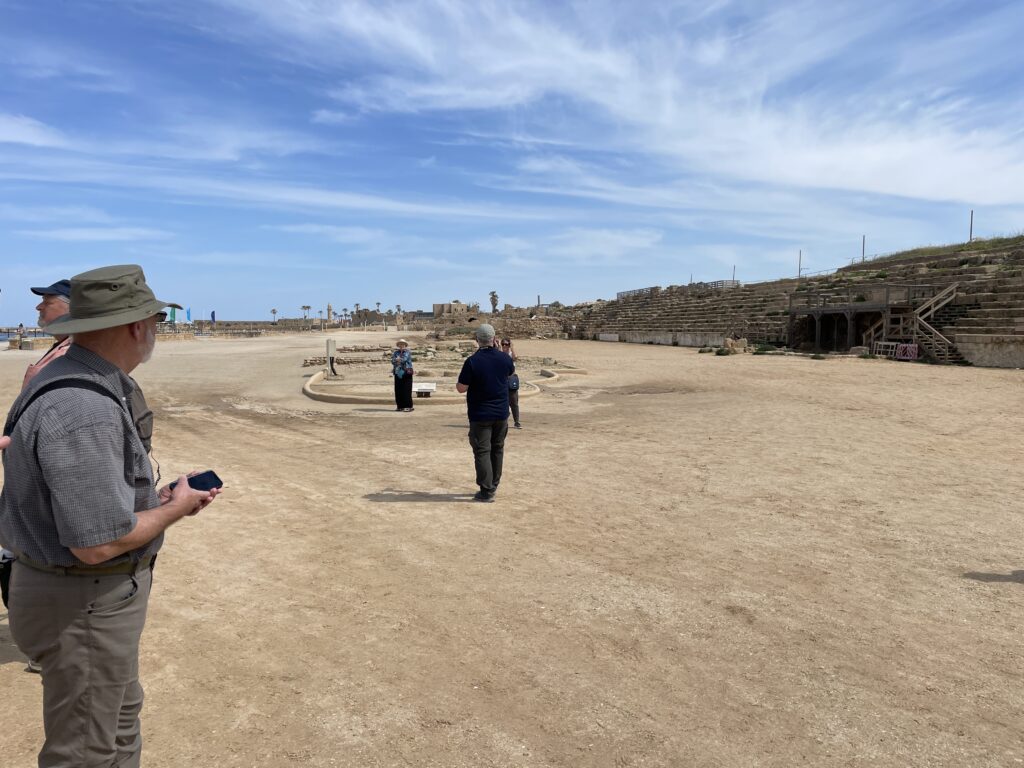
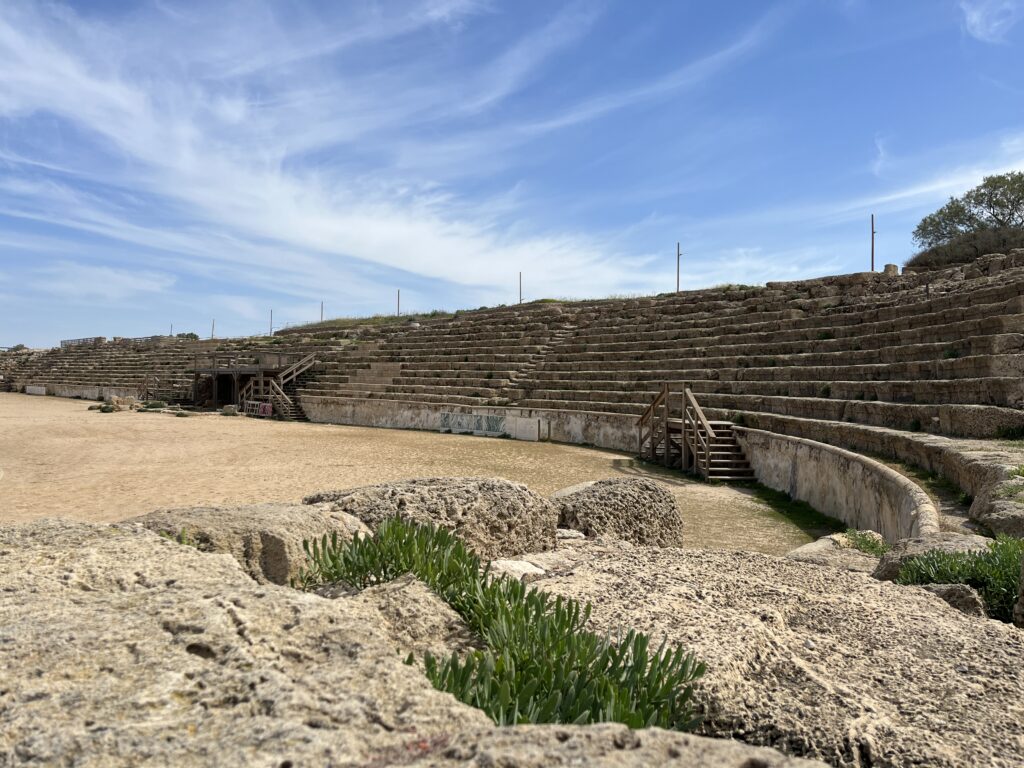
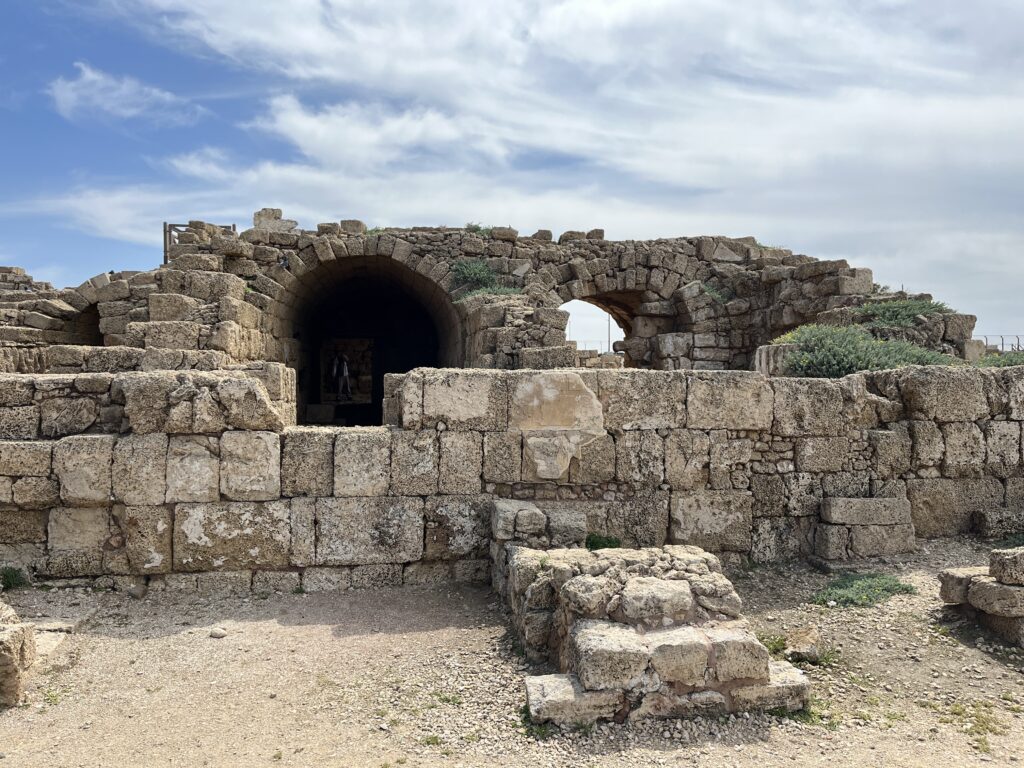
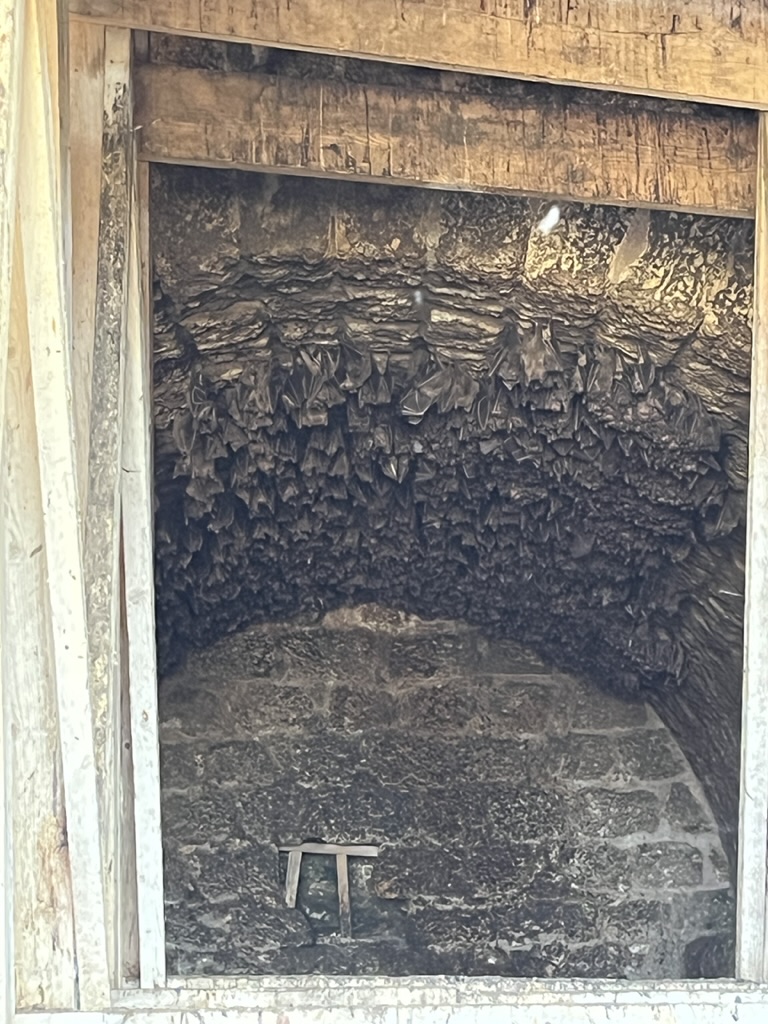
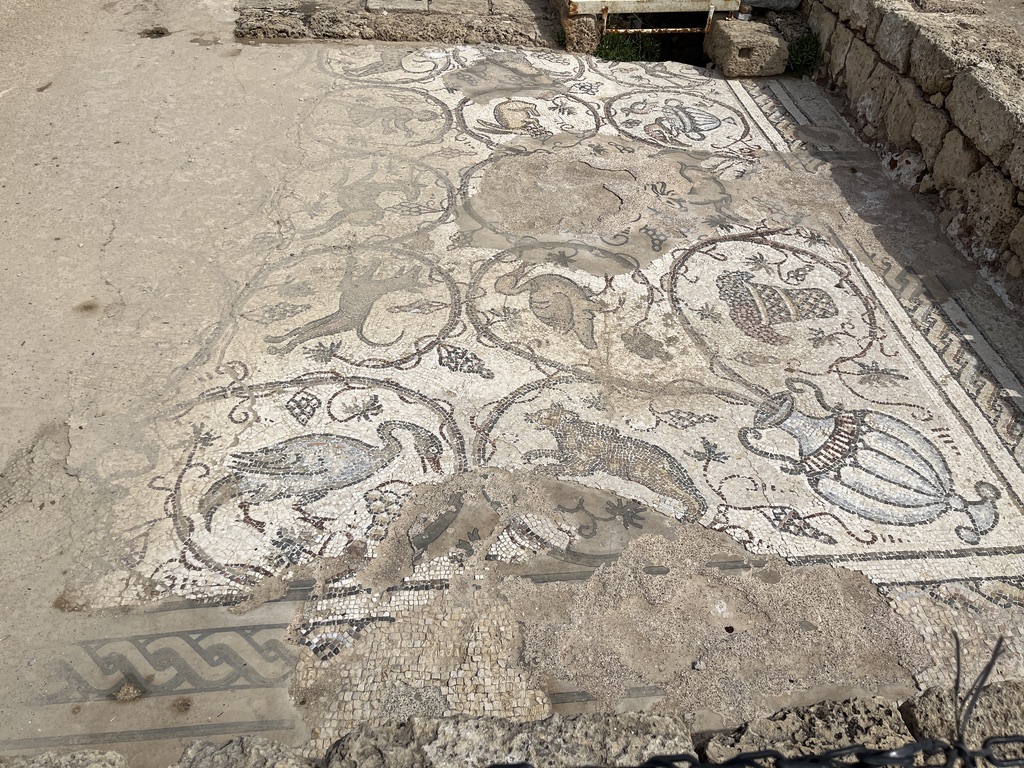
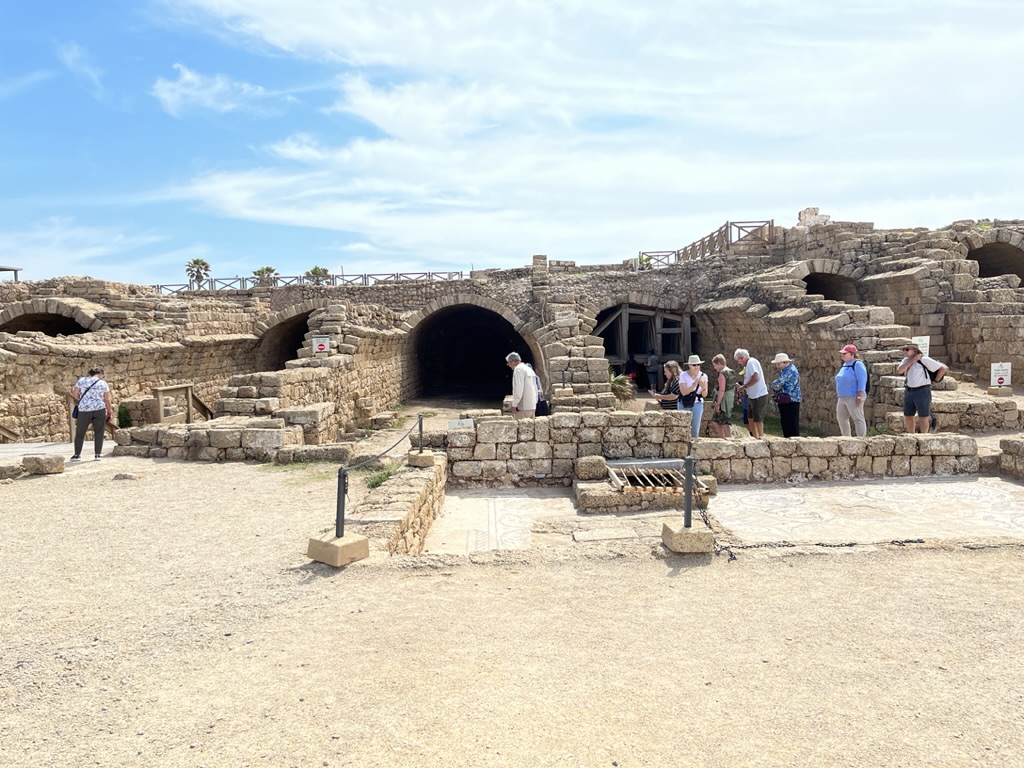
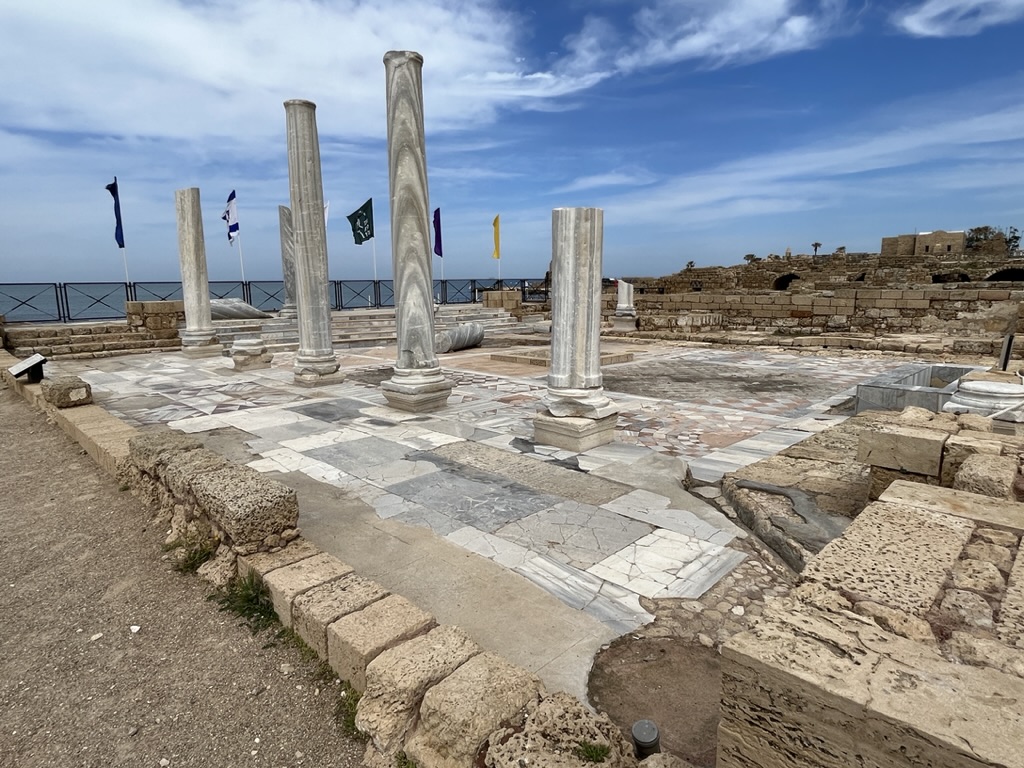
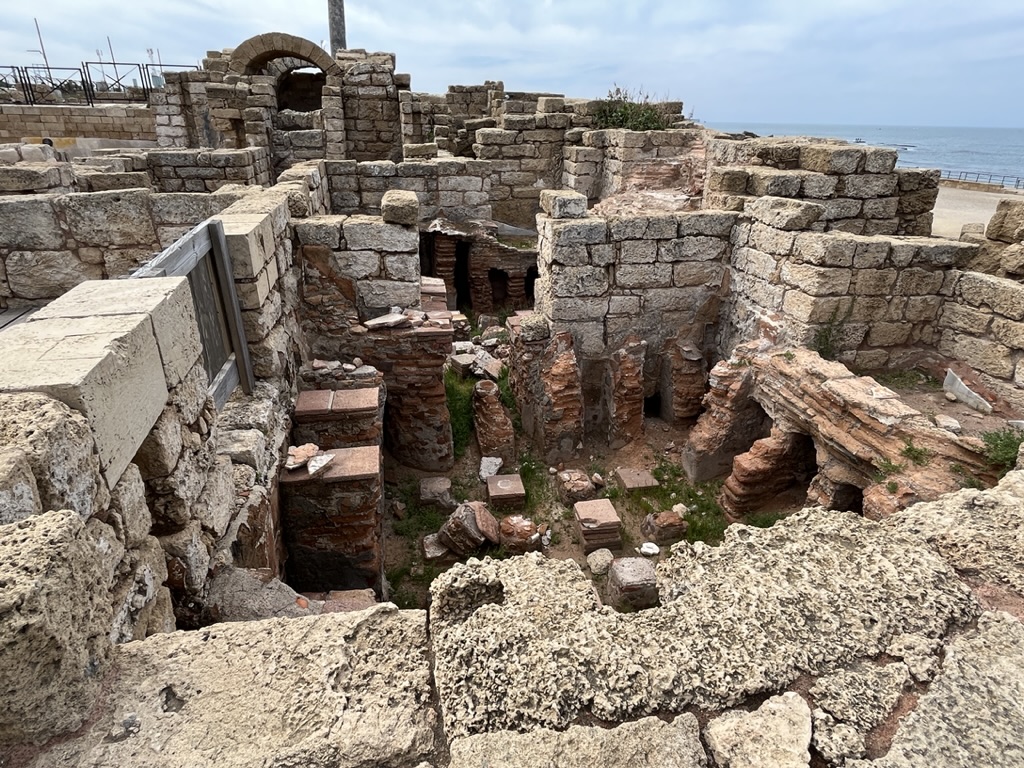
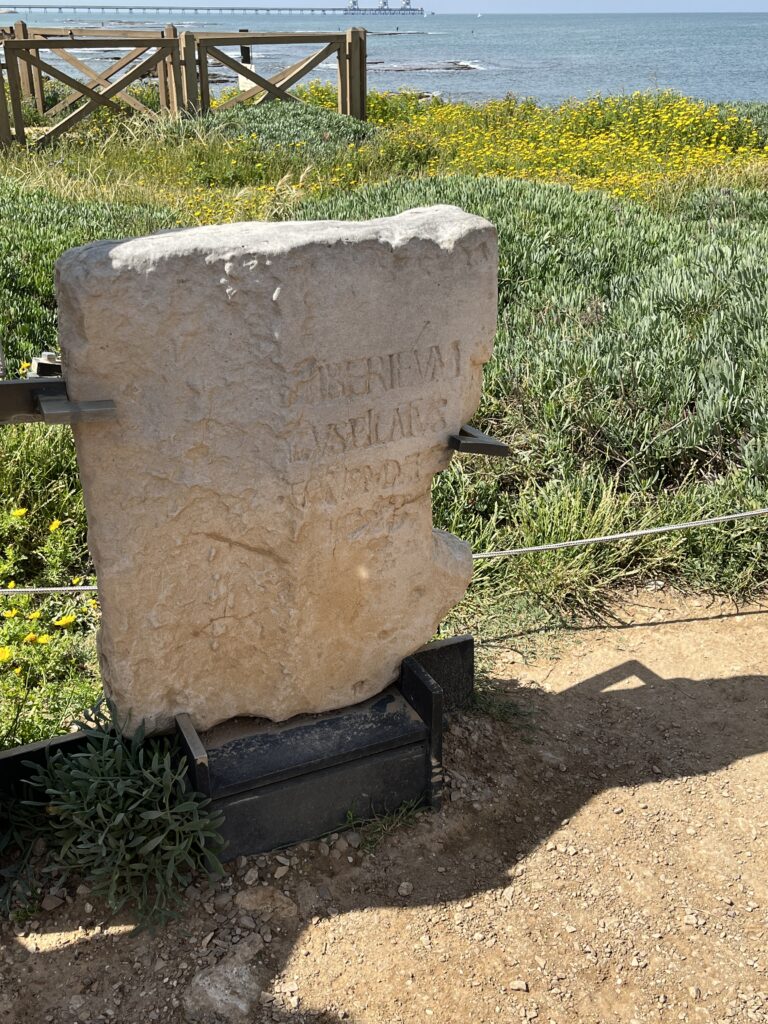
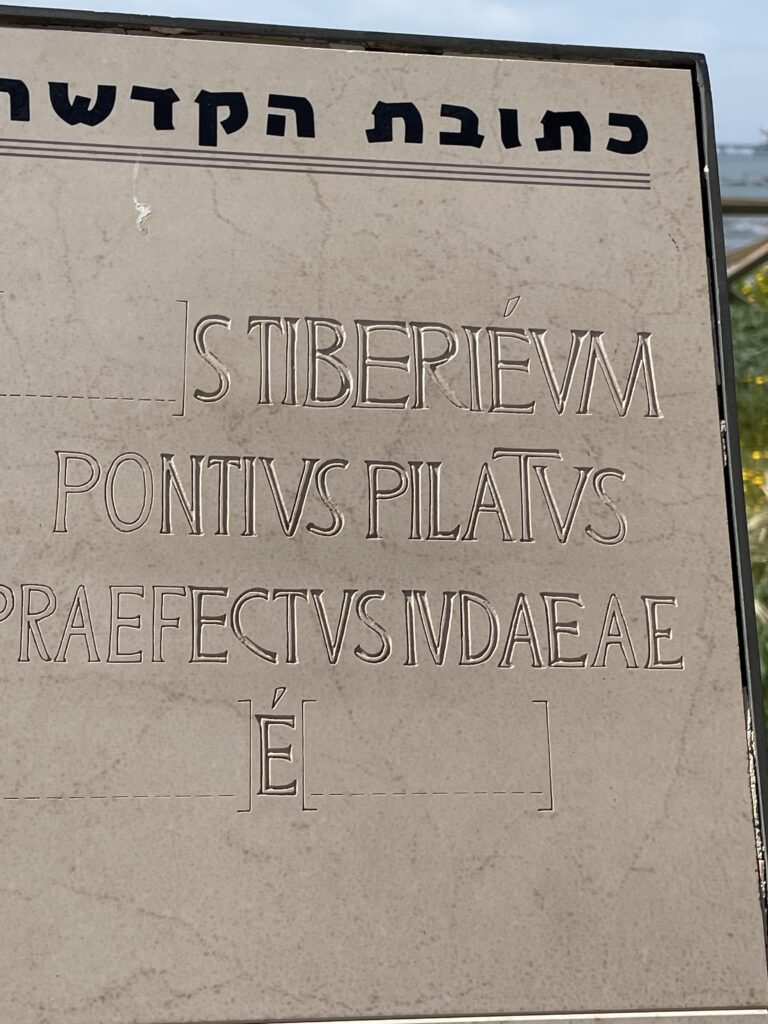
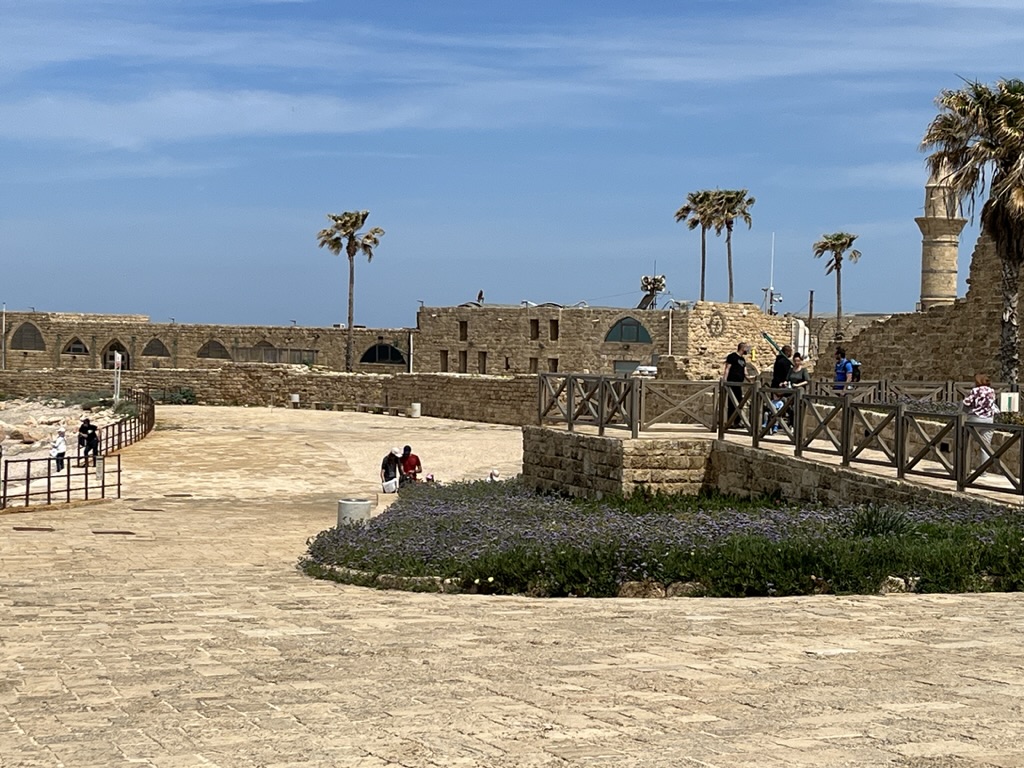
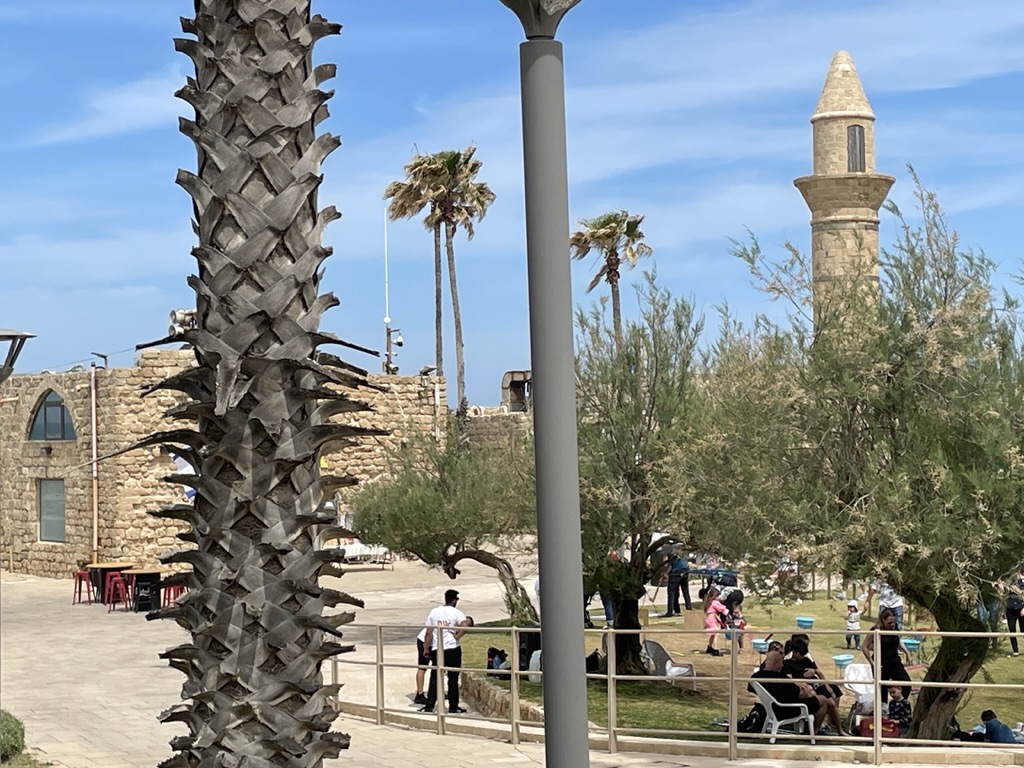
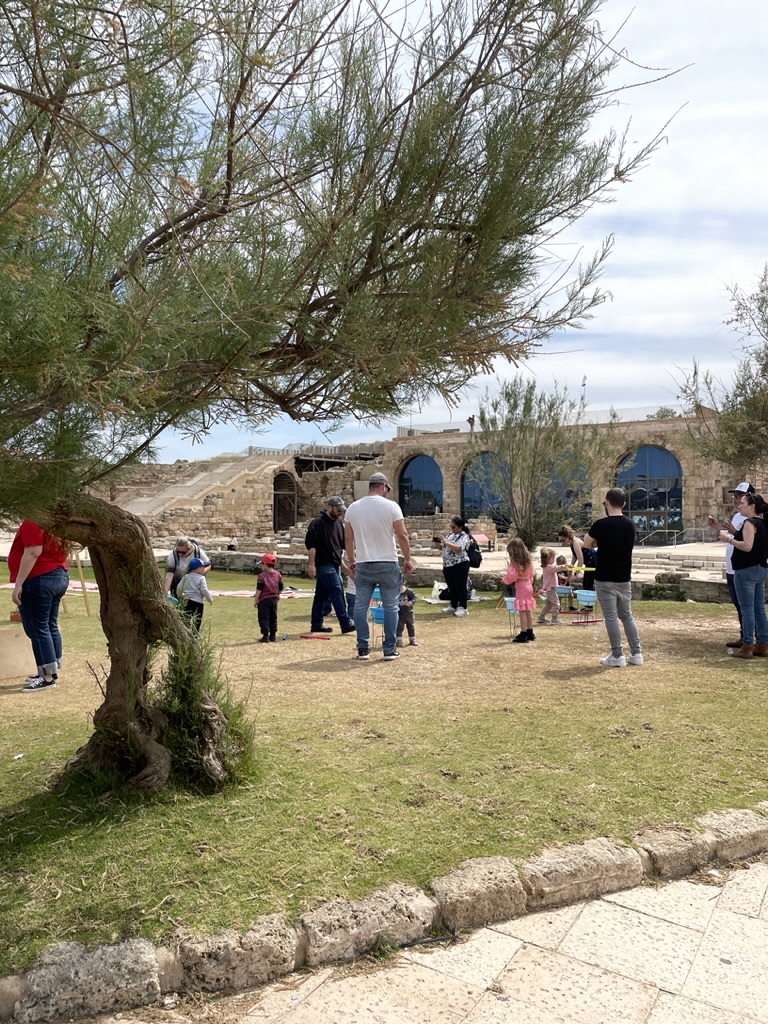
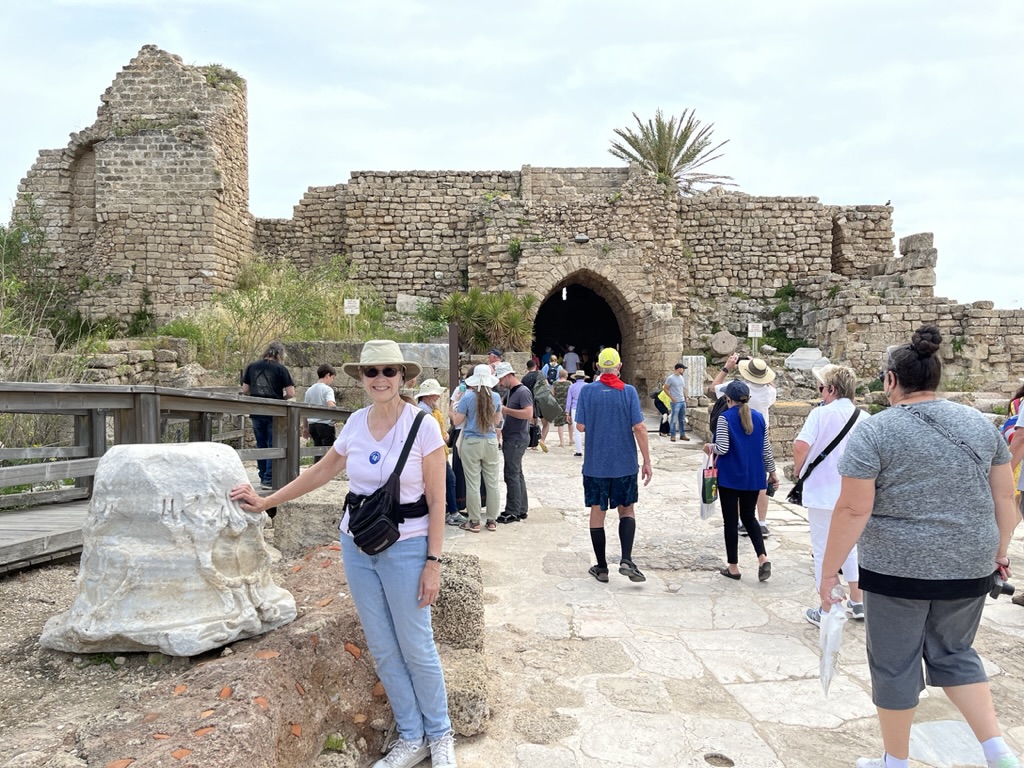
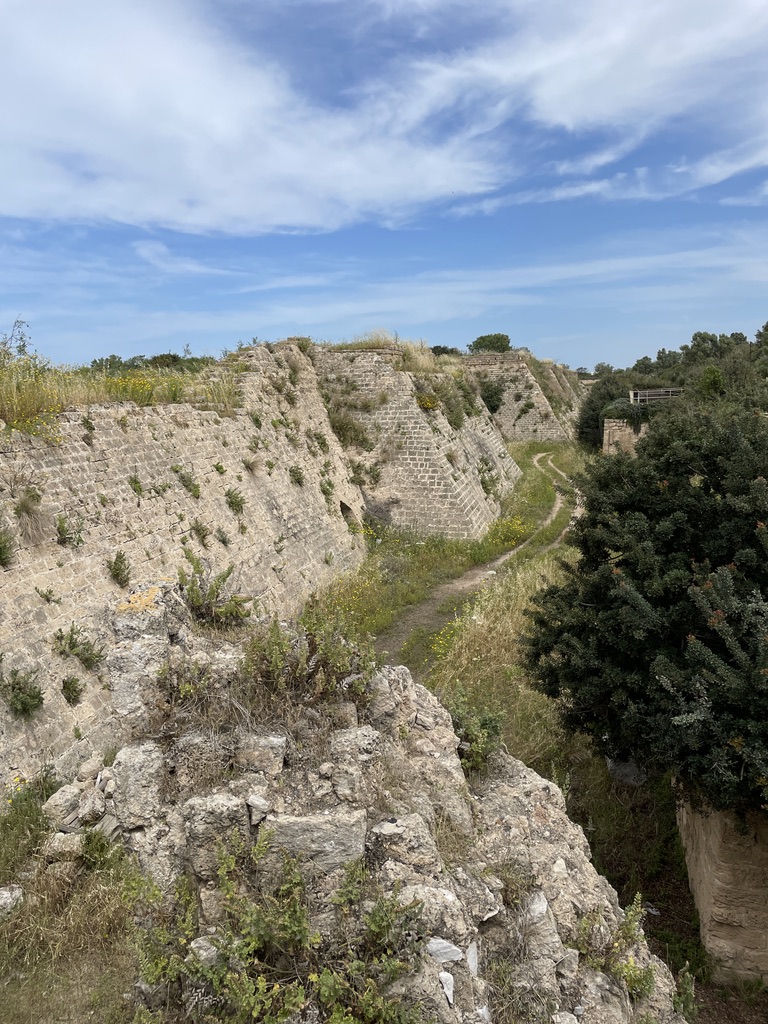
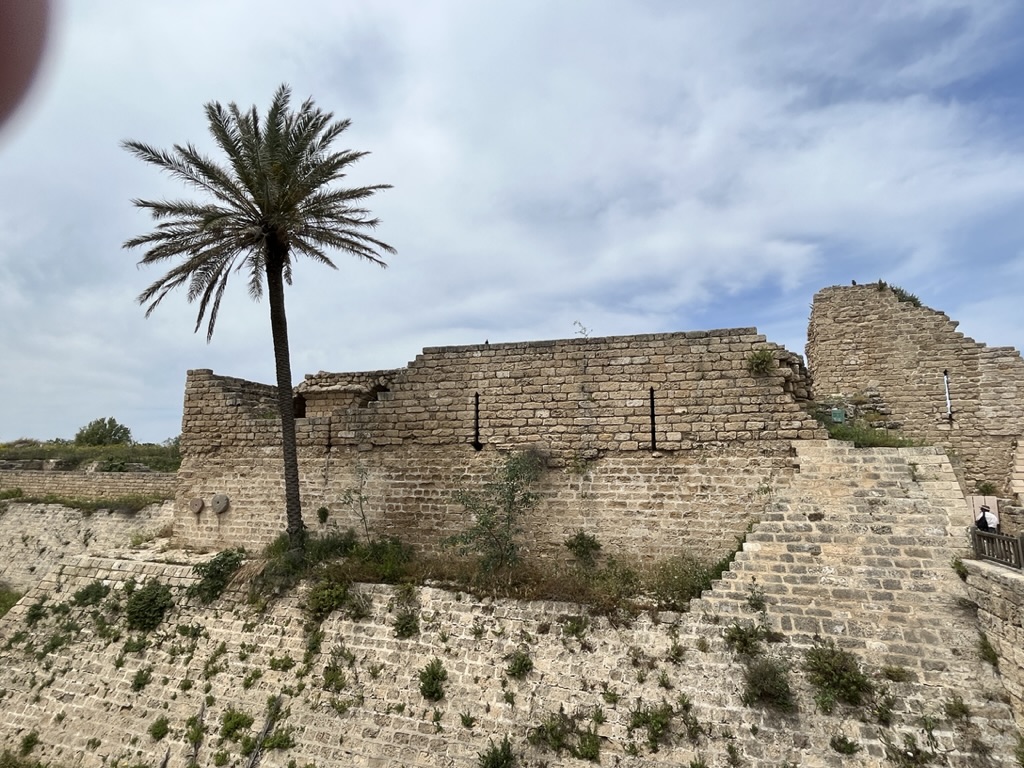
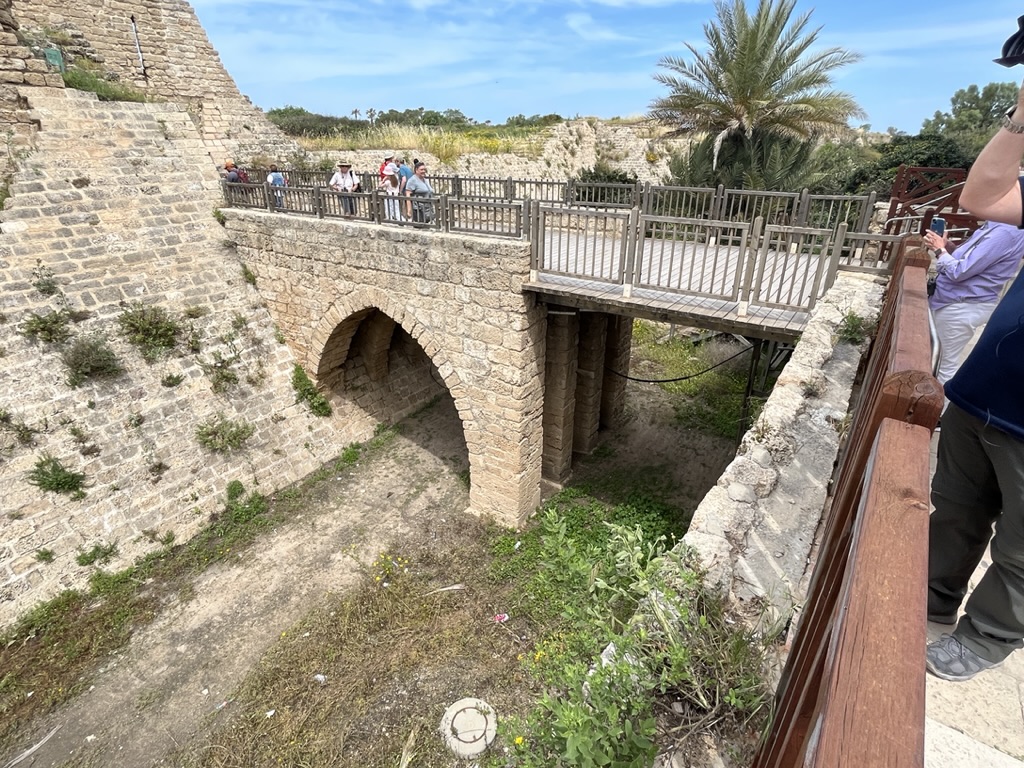
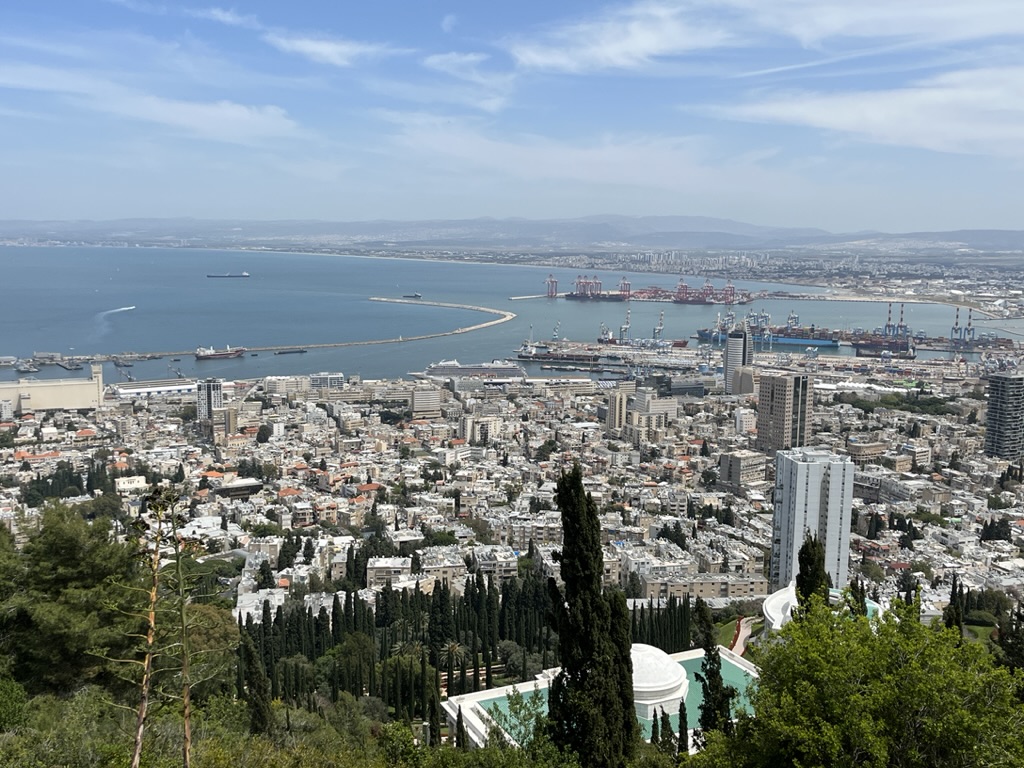
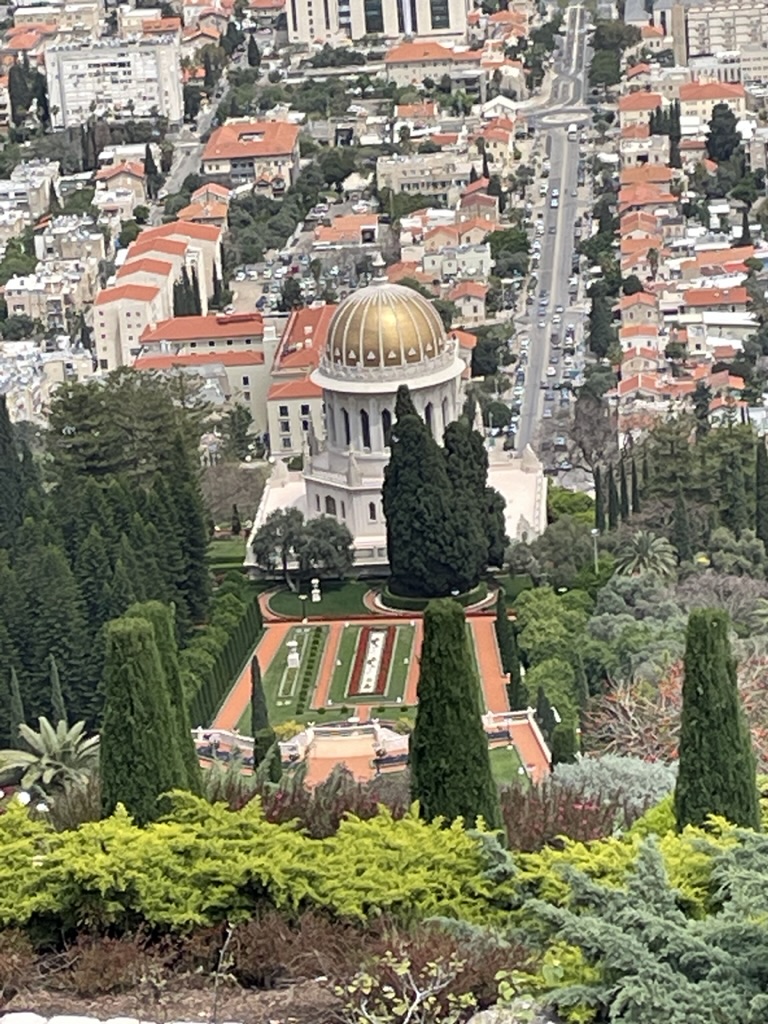
I had heard about the slip of paper visa in Israel. My Saudi visa stated on it that it would become VOID if the Bearer obtained an Israeli visa thereafter. I never visited for fear of reprisal.